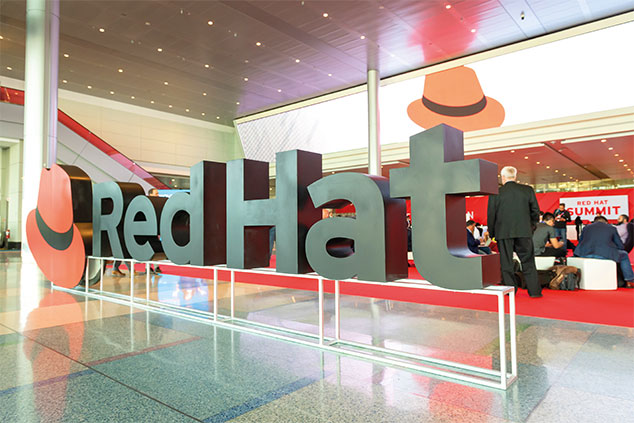
The shift by businesses away from expensive and inefficient in-house information technology to “cloud-based” computing and software is still in its infancy. Firms find it more practical and cost-effective to rent or buy IT services or software – or store data – on the internet rather than deal with computing infrastructure and software (and the staff that may come with it) themselves.
The trend has a long way to go, however. With most companies only a fifth of the way there, according to consultants McKinsey & Co, this is still an early-stage opportunity to back a technology shift with significant growth ahead.
Research groups are projecting that the cloud industry is expanding anywhere between 15% and 30% a year, potential gains that have been attracting enough investor money to help turn cloud providers like Amazon and Microsoft into the world’s biggest companies. Some may balk at the premium share prices despite the cloud’s high growth profile, but there are other ways to invest.
A cheaper way in
A modestly-priced cloud player seeking to build momentum in the sector is International Business Machines (NYSE: IBM), better known as IBM. This 108-year-old multinational described by the Wall Street Journal as an “icon of American ingenuity” (it helped invent the cash machine and floppy discs) has struggled of late amid the drift away from traditional IT products such as desktop PCs. Sales have shrunk to $79bn from nearly $110bn six years ago.
In a bold move to get back on a growth track, IBM paid $34bn this year for Red Hat, a profitable software business founded in the early 1990s. It generated sales of $3.4bn last year and will boost IBM’s group revenue and margins from 2020. But what makes Red Hat special are its top-rated and in-demand capabilities and applications built around Linux – a computer operating system that happens to underpin most of the cloud.
This significantly strengthens IBM’s capabilities at the centre of the cloud migration trend and, in particular, in its focus on serving the “hybrid” cloud, where businesses seek a flexible mixture of cloud usage, using multiple platforms as well as keeping some functions in-house.
Simply migrating onto a single platform is always an option but, for numerous reasons, the hybrid approach is generally preferable. Businesses don’t want to be chained to one platform owned by a powerful technology giant. And increasing regulation can require data to be held locally within a country rather than more broadly. So multiple solutions and providers are required locally and internationally. Red Hat brings the expertise to deliver this so that clients can traverse many different and unconnected platforms seamlessly.
This ultimately makes IBM something of a unique multi-channel cloud player, seeking less to compete with larger rivals and more to complement them, using their platforms as clients require. Red Hat has partnered with the likes of Amazon and Microsoft in this way for years. Protecting such existing relationships means maintaining Red Hat’s independence. At the same time, however, IBM can leverage its presence in nearly 200 countries to help extend Red Hat’s reach while exploiting synergies.
The 20% progress most companies have made to cloud migration so far is likely to include a lot of the easier work. It will get harder as older systems and applications, as well as legal and security issues, all need complex solutions, which is when Red Hat really comes into its own. With IBM shares far cheaper than the overall market and yielding 4.8%, they look worth a punt.
A supertanker gradually changing course
The Red Hat deal is a long overdue move by IBM to break declining sales and deliver growth. Admittedly, chief executive Ginni Rometty, a lifelong “IBMer” who took over in 2012, has had a lot more than cloud strategies to deal with over what have been painful years of industry transformation, certainly for shareholders.
The financial record isn’t pretty. Except for a few upticks in quarterly sales last year which were falsely heralded as a return to sustained growth, it’s been a case of continuous sales and profit declines for years.
The group is trying to capture fast-growing business opportunities but at the same time rationalise existing operations. It has dated, legacy businesses in its labyrinthine structure that aren’t delivering. Acquisitions like Red Hat seek to reverse this.
The shares are currently trading at about $133 and have beaten the S&P 500 this year. However, they suffered during the big market falls last autumn caused by US-China trade worries and so although they have bounced, they’re still below the price range of $140-$150 a year ago.
Given that IBM still has it all to prove with Red Hat and its general rationalisation programme, most analysts are on the sidelines, rating the shares a “hold” (although they are becoming a bit more positive). Nevertheless, the consensus share price target is $155 (17% upside), and sales, profits and cashflows are all forecast to rise after 2019.
As far as investors are concerned, although it’s early days, IBM does offer an intriguing play on the high-growth cloud migration trend – and a very reasonably-priced one to boot. The stock is on a forward price/earnings ratio of just ten, a significant discount to the market. Meanwhile, the covered dividend yield of 4.8%, which is expected to grow faster than inflation, should offer considerable support.